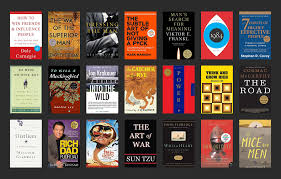Daniel Kahneman's Research and studies about Psychology.
I am big fan of Daniel Kahneman studies and research. I read his books
Daniel Kahneman is a renowned psychologist and Nobel laureate known for his work on cognitive biases and decision-making. He was born in Tel Aviv, Israel, in 1934 and later became a professor of psychology and public affairs
- He is the first psychologist to receive the Nobel Prize in Economics, which he was awarded in 2002 for his work on prospect theory, a model for decision-making under uncertainty.
- Kahneman has a deep interest in the role of intuition in decision-making and has written extensively on the topic. He believes that intuition can be a valuable tool, but also recognizes its limitations and potential for biases.
Today we talk about his Best two books research
Thinking, Fast and Slow:
1. There are two systems of thinking: System 1 is fast, intuitive, and automatic, while System 2 is slower, deliberate, and requires effort. Both systems work together to help us make decisions, but System 1 often dominates.
2. Our minds use mental shortcuts, or heuristics, to make decisions quickly and efficiently. However, these shortcuts can sometimes lead to errors in judgment, known as biases.
3. One common bias is the availability heuristic, which occurs when we judge the likelihood of an event based on how easily we can recall examples of it. This can lead to overestimating the likelihood of rare events, such as plane crashes.
4. Another bias is the confirmation bias, which occurs when we seek out information that confirms our existing beliefs and ignore information that contradicts them.
5. We are often overconfident in our judgments and predictions, leading us to make mistakes in decision-making.
6. Emotions play a significant role in our decision-making, even when we try to be rational. We often rely on our emotions to make quick judgments.
- Our emotions and moods can affect our decision-making, as people are more likely to take risks when they are in a positive mood and more likely to be cautious when they are in a negative mood.
7. Our experiences of pleasure and pain are not always in proportion to the actual outcomes. For example, we may overestimate the pleasure of owning a new car and underestimate the pain of losing a job.
8. The way a decision is presented to us can significantly influence our choice. This is known as the framing effect.
9. We are more willing to take risks to avoid losses than to achieve gains, known as loss aversion.
10. Our self-control is limited, and we are more likely to give in to temptation when we are tired, stressed, or distracted.
Noise: A Flaw in Human Judgment
1. Human judgments and decisions are often inconsistent and can vary widely, even when people are presented with the same information. This inconsistency is referred to as "noise."
2. Noise can arise from various factors, including individual differences, mood, fatigue, and context.
3. Noise can have serious consequences in fields such as healthcare, finance, and justice, where consistent and accurate decision-making is critical.
4. There are several strategies that can help reduce noise, including developing clear decision-making criteria, using data-driven approaches, and using structured decision-making processes.
- Establish clear decision-making criteria: It's important to define the criteria for making decisions and ensure that everyone involved in the decision-making process understands them. This can help ensure that decisions are consistent and based on objective criteria rather than personal biases or preferences.
- Use data-driven approaches: Using data to inform decisions can help reduce noise by providing an objective and consistent basis for decision-making. It's important to ensure that the data is accurate, reliable, and relevant to the decision at hand.
- Implement structured decision-making processes: Structured decision-making processes can help reduce noise by providing a clear and consistent framework for making decisions. This can include using decision trees, checklists, or other tools to guide decision-making and ensure that all relevant factors are considered.
- Involve multiple perspectives: Getting input from multiple perspectives can help reduce noise by providing a more comprehensive view of the decision at hand. This can help ensure that all relevant factors are considered and reduce the impact of individual biases.
- Monitor and evaluate decisions: It's important to monitor and evaluate decisions to ensure that they are consistent with the decision-making criteria and that they achieve the desired outcomes. This can help identify and address any sources of noise in the decision-making process.
5. It is important to recognize that reducing noise requires a collective effort and cannot be achieved by individuals alone. Organizations and institutions need to implement systemic changes to reduce noise and improve decision-making.







Comments
Post a Comment